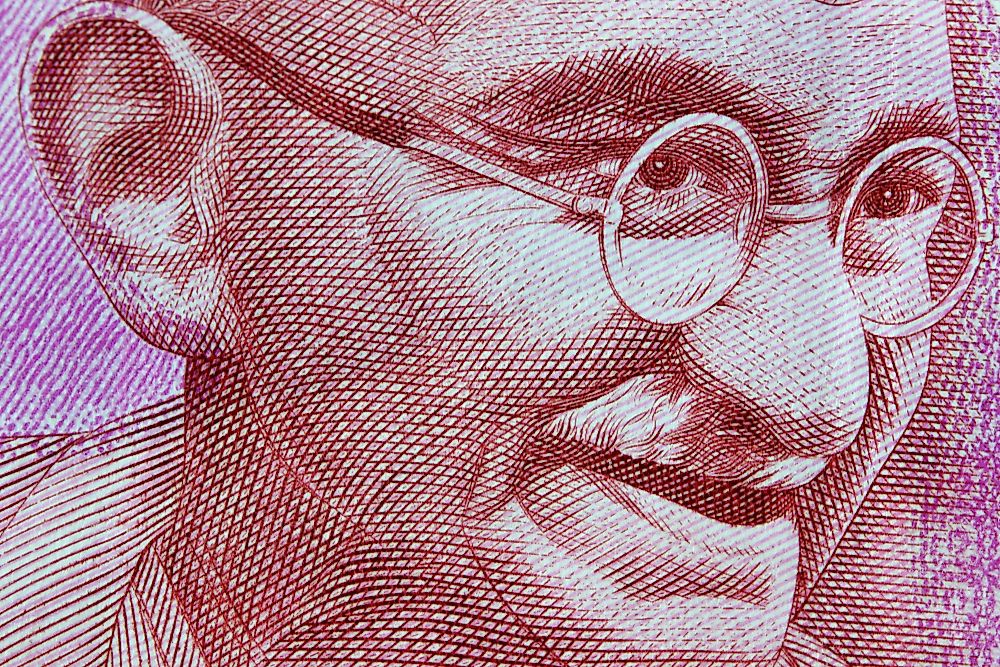Mahatma Gandhi – Important Figures in World History

Mahatma Gandhi was born on October 2nd, 1869, in the city of Porbandar in then British controlled India. His mother was very religious, and he grew up as a Vaishnaiva Hindu (placing emphasis on the god Vishnu), with elements of Jainism as well. Jainism advocated non-violence (ahiṃsā) as a key doctrine that included vegetarianism, as well as such actions as meditation and fasting. He was married at the age of 13 to Kasturba Makanji, and they would go on to have 5 sons together, though his first son passed away as a baby. Gandhi's father died just before his first son, so this was a difficult time in the young Ghandi's life. After he turned 18, he left his family to go to London to study and become a lawyer.
4. Career
Ghandi was not suited to be a lawyer, and the first case he handled went very poorly. However, he found a job opportunity in what is now Natal, South Africa, in what was also then a British possession, and arrived there in 1893. This was a turning point in his life, as he was increasingly subjugated to numerous instances of racial discrimination there, which inspired him to fight against such attitudes. Gandhi started the Natal Indian Congress in 1894, and the group actively fought to end discrimination of Indians there. He returned to India in 1896 to bring his wife and children back to Natal. In 1906, Gandhi organized the "Satyagraha," which means truth and firmness, a massive campaign of protests against newly passed anti-Indian laws in South Africa.
3. Major Contributions
Gandhi returned to India in 1915, but was not very politically active until the Massacre of Amritsar, which occurred in 1919. In the event, British troops killed 400 people during a protest. The British created a series of acts in 1930 that prohibited Indians from selling salt, and imposed heavy taxation upon the country. Gandhi planned a protest, formally called "The Salt March", to fight back against these new laws. In 1942, he began the "Quit India" Movement, with the goal of removing the British from India and, in 1945, he became an active member in the negotiations regarding India's independence. In 1947, it was announced that rule of British India would be handed over from the British to the people there, and the state would be partiioned into the sovereign states of predominately Muslim Pakistan and predominately Hindu India.
2. Challenges
The colonial government was an ongoing challenge working against Gandhi, and he was imprisoned several times for civil disobedience. His first imprisonment was in Natal in 1913, during his Satyagraha campaign. In 1922, he was sentenced to six years in jail by the British authorities, but was released in 1924 after an appendicitis surgery. He still spent more time in prison, though, when he was jailed in 1930 for breaking the Salt Acts. Gandhi was also advocating for peace between the Hindus and Muslims in the Indian subcontinent, and this turned some Hindus against him because they were angry that he was being friendly towards Indian Muslims.
1. Death and Legacy
Mahatma Gandhi was assassinated on January 30th, 1948 by Nathuram Godse, a Hindu who was angry that Gandhi was promoting acceptance of, and compassion for, Muslims by Hindus. Gandhi's philosophy of Satyagraha, a peaceful form of rebellion, is still practiced worldwide. Many of his ideas, such as fasting and eating vegetarian for purification and as a form of protest, are still used as well. He inspired many other civil rights activists that would follow around the world, notably including Martin Luther King, Jr. in the U.S. and Nelson Mandela in South Africa. Gandhi was a man devoted to creating unity and harmony in the world and for his people, and his legacy has been passed on to the generations of pacificists and leaders that have followed in his footsteps.











